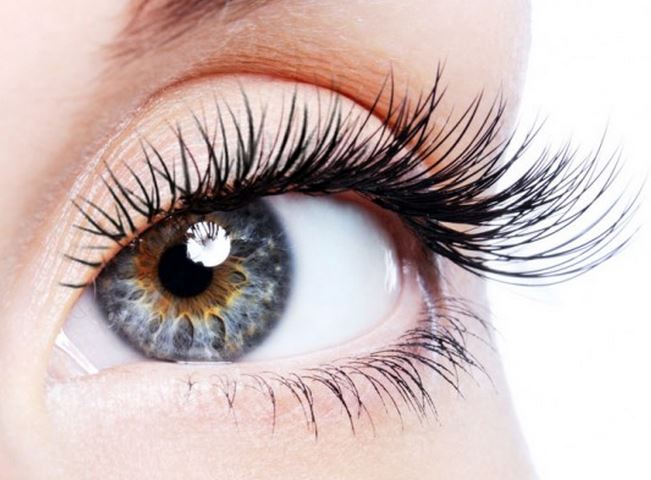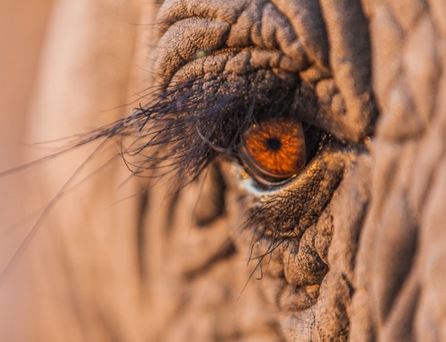When eyelashes are one third the width of the eye, the rate of evaporation from the surface of the cornea is just right. Most mammals have this eyelash-length to eye-width ratio, scientists from the Georgia Institute of Technology reported.
When eyelashes are longer or shorter than one-third of eye width, the ideal airflow is disrupted, leading to too much dust hitting the eye, they added. In other words, if eyelashes are not the right length, the eye can get too dry and dirty.
The study findings have been published in the Journal of the Royal Society Interface (citation below).
The research started off when the team was in the basement of the American Museum of Natural History in New York to look at preserved animal hides. They later built a 2-foot tall wind tunnel with a makeshift eye.

Beware of fake eyelashes, they could be bad for your eyes!
After gathering and analyzing data on 22 species of mammals, including giraffes, elephants, hedgehogs, and humans, they found we all, except for elephants, had the same ratio of eyelash length is one-third of eye width.
Shorter or longer eyelashes, including those fake ones that have become popular over the past few decades, raise airflow around to eye, leading to more dust hitting the surface and faster evaporation.
Study author, Guillermo Amador, a Georgia Tech Ph.D. candidate, said:
“Eyelashes form a barrier to control airflow and the rate of evaporation on the surface of the cornea. When eyelashes are shorter than the one-third ratio, they have only a slight effect on the flow.”
“Their effect is more pronounced as they lengthen up until one-third. After that, they start funneling air and dust particles into the eye.”
Team leader, Assistant Professor David Hu, sent a student to the Museum to measure the eyes and eyelashes of several animals in 2012. Every species, apart from the elephant, which had very long eyelashes, was found to have evolved the same ratio of lash-length to eye-width.
The researchers then built a wind tunnel to recreate airflow on a fake human eye they had made. The cornea was a 4mm deep, 20mm diameter aluminum dish. It was placed on top of an acrylic plate, which served as the rest of the face. They used mesh around the dish to replicate the eyelashes.
By changing the mesh length and measuring evaporation and particle deposition, they were able to find the ideal ratio.
Prof. Hu said:
“As short lashes grew longer, they reduced airflow, creating a layer of slow-moving air above the cornea. This kept the eye moist for a longer time and kept particles away. The majority of air essentially hit the eyelashes and rolled away from the eye.”
With longer eyelashes, the opposite process occurred. The lashes extended further into the flow of air and created a cylinder. The air channeled toward the eye, leading to faster evaporation.

In this study, elephants were the only mammals found to have eyelashes longer than one-third of the width of their eyes.
Mr. Amador said:
“This is why long, elegant, fake eyelashes aren’t ideal. They may look good, but they’re not the best thing for the health of your eyes.”
Fake ones, however, if they are designed with the ideal length, can help people who cannot grow eyelashes. Treatments like eyelash transplants are available with chosen specialists. They provide extra protection and reduce dry eye.
Alexander Alexeev, an associate professor in the School of Mechanical Engineering, said:
“Even if they’re not the correct length, more eyelashes are always better than less. If fake eyelashes are dense enough, they may give the same overall effect in protecting the eye even if they are longer than one-third.”
The researchers believe their findings could be used to make eyelash-inspired filaments to protect photographic sensors, solar panels, or autonomous robots in dusty environments.
Citation: “Eyelashes divert airflow to protect the eye,” Guillermo J. Amador , Wenbin Mao , Peter DeMercurio , Carmen Montero , Joel Clewis , Alexander Alexeev , and David L. Hu. Journal of the Royal Society Interface. Published 25 February 2015. DOI: 10.1098/rsif.2014.1294.
